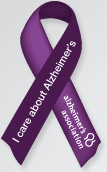2) Aging-related vision disorders are frequently untreated when people with AD can no longer clearly express their difficulties in seeing clearly.
3) Vision, memory and perception are all linked, so that even when someone can see an object clearly, she may not be able to make sense of it.
4) There are many unknown factors, such as conditions like synesthesia that may contribute to hallucinations.

2) An increased sensitivity to glare. You may see older people shrink from bright windows, light reflected on metal, shiny floors (that may look wet and unsafe), and direct sunlight. Glare is not only visually uncomfortable, but may actually cause physical pain, such as headaches, in older adults.
3) Aging eyes need much more overall light to see clearly. The average 65-year-old needs two to three times the amount of light as the average 20-year-old. People over 80 or older adults with special visual problems like those we discuss in the next section may need up to 10 times that amount of light. This is especially true when someone is doing a particular task such as needlework or a jigsaw puzzle, but also applies to eating or walking – hallways and stairways need to be well lit. In general, most lighting problems in residential care communities come from a lack of uniformity in lighting – a confusing mixture of “hot spots” and dim lighting.
 4) Decreased visual acuity – formally called presbyopia, informally called “Need longer arms syndrome.” As we grow older we have a decreasing capacity to focus on objects at close range, so we either get new glasses or hold reading materials at arm’s length. The need for longer arms is caused by changes in the eye’s lens. When we are young, and shift our focus from a near object to a distant object, it is the lens which changes shape to focus on the new object. As we age, the lens becomes stiffer. It’s like having eyes that go from being an auto-focus camera, which can focus clearly on any object at any range, to a fixed-focus camera that blurs items out of its focal range. Most older adults have reading glasses for this condition, but because this condition tends to get progressively worse with age, people with dementia may no longer be wearing a prescription that meets their needs.
4) Decreased visual acuity – formally called presbyopia, informally called “Need longer arms syndrome.” As we grow older we have a decreasing capacity to focus on objects at close range, so we either get new glasses or hold reading materials at arm’s length. The need for longer arms is caused by changes in the eye’s lens. When we are young, and shift our focus from a near object to a distant object, it is the lens which changes shape to focus on the new object. As we age, the lens becomes stiffer. It’s like having eyes that go from being an auto-focus camera, which can focus clearly on any object at any range, to a fixed-focus camera that blurs items out of its focal range. Most older adults have reading glasses for this condition, but because this condition tends to get progressively worse with age, people with dementia may no longer be wearing a prescription that meets their needs.5) A yellowing or dulling of the lens. When we are young, the lens on our eye is nearly clear, but as we edge past 40 we usually begin to notice that our vision isn't as precise as it used to be, and we need more light for reading and close work. Tissue builds up and the lens that used to be almost clear is now distinctly yellow. Colors become muted, so that when we are 80 or older, it can be nearly impossible to tell yellow from peach, or pale lavender from pale blue.
6) Dry, itchy eyes and eyelids. These problems may be caused by eye disorders or by environmental factors such as heating or air conditioning systems, fans, wind, dry climates, air pollution (including cigarette smoke), and hair dryers. Because most older people with dry eyes are women, some think the condition may be estrogen related. Other people believe it may be an acquired allergic reaction to eye make-up in women who continue to use it. This is easily treated with eyedrops, but people with dementia may not be able to express their need for them.







